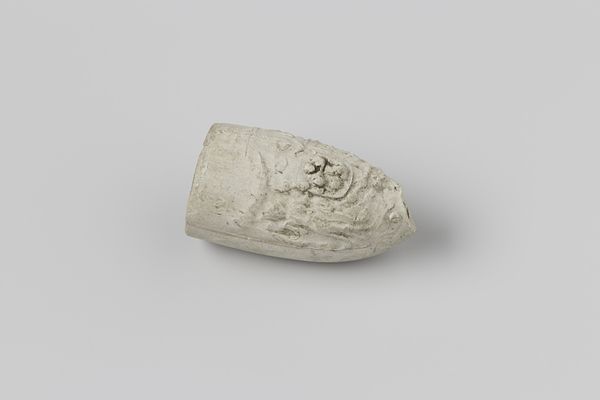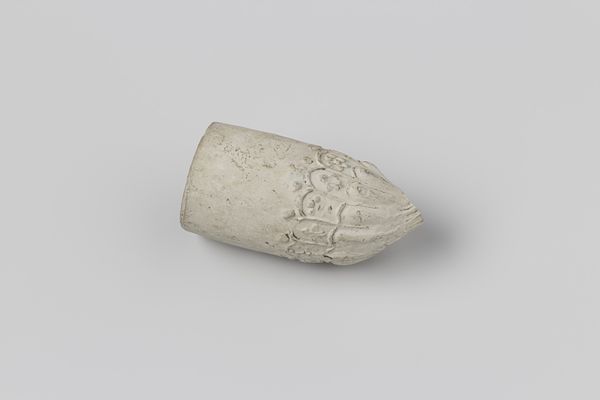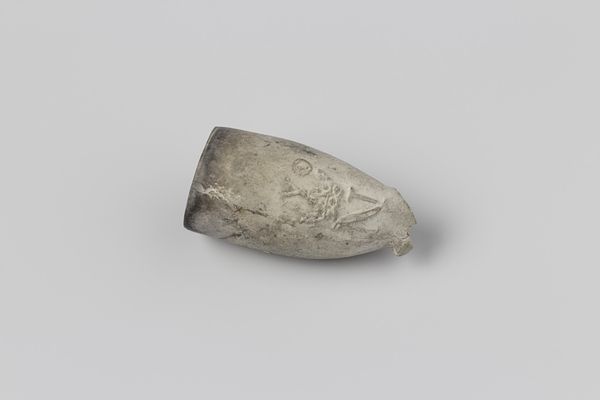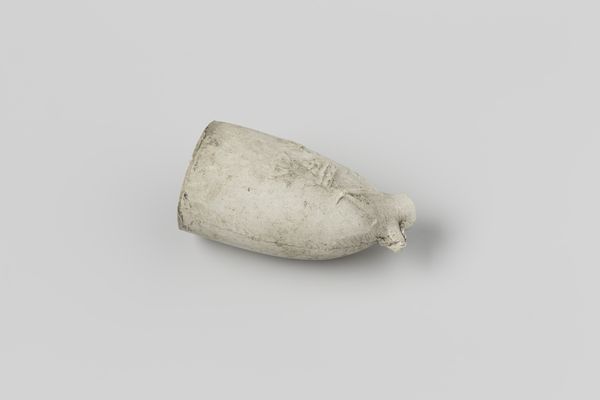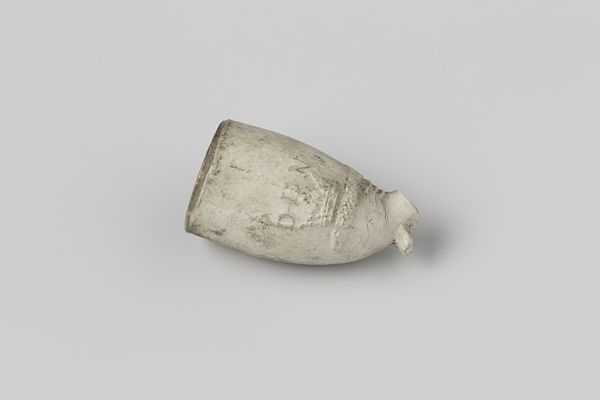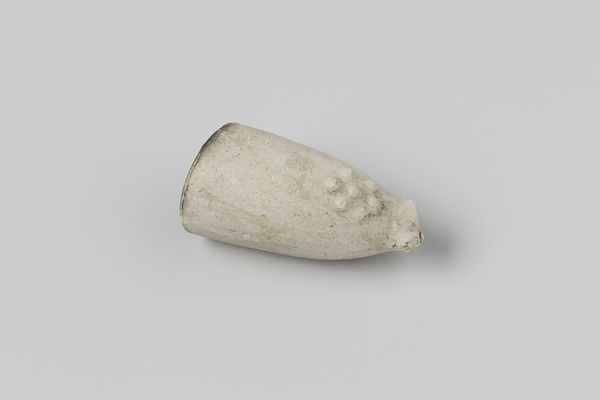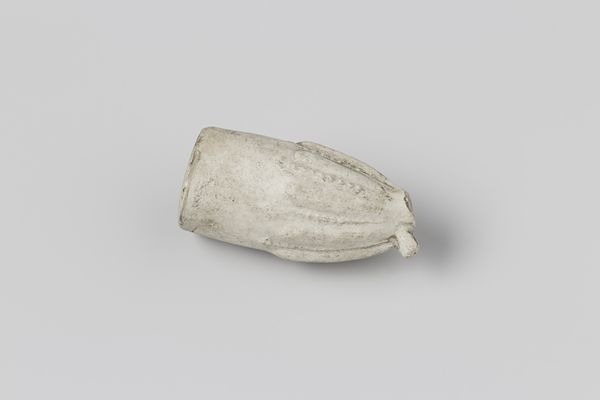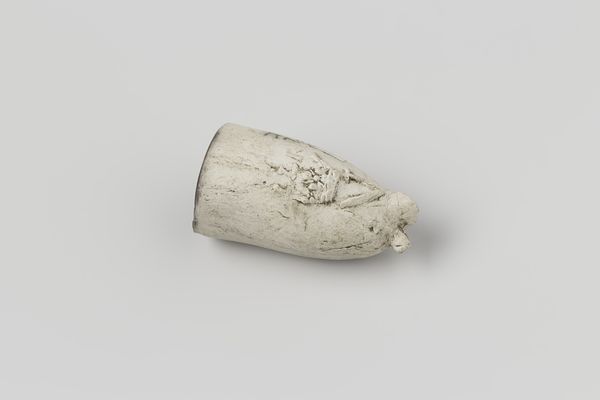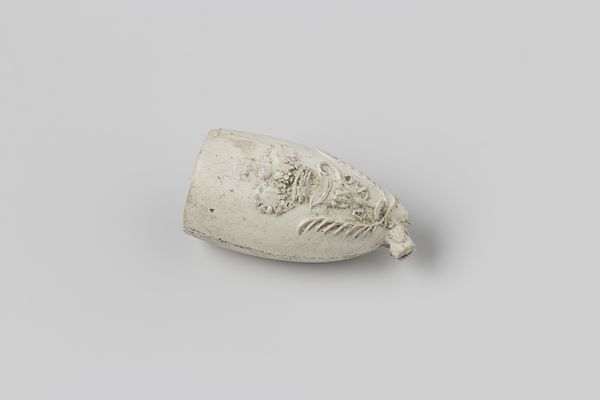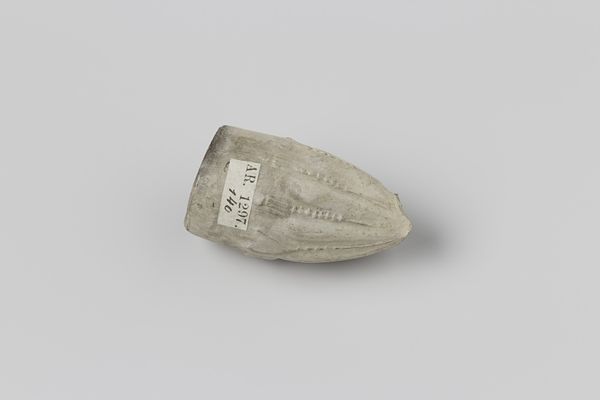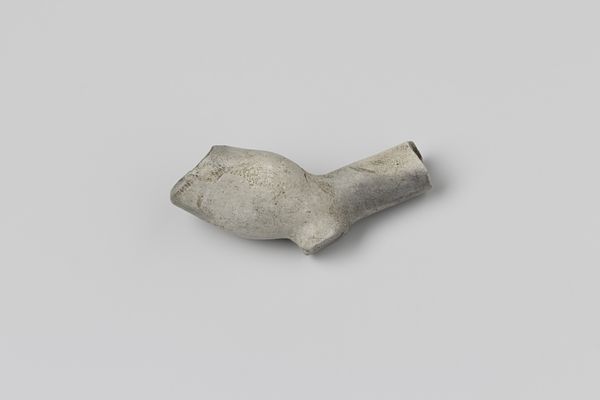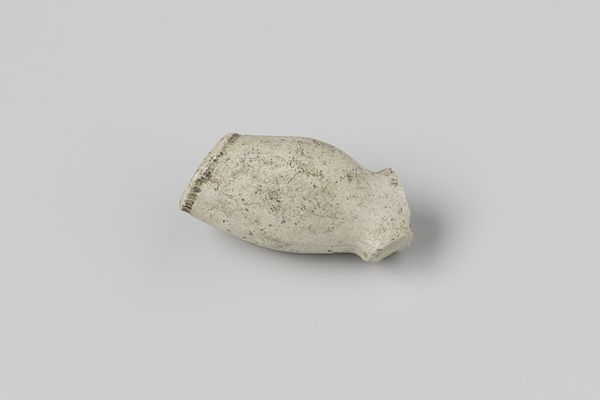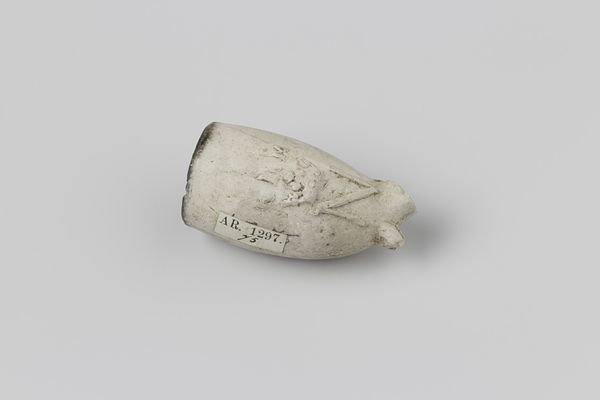
ceramic, earthenware, sculpture
#
baroque
#
ceramic
#
earthenware
#
sculpture
Dimensions: length 4.2 cm, width 2.2 cm
Copyright: Rijks Museum: Open Domain
Curator: This object, dating from 1740-1780, is called "Pijpenkop" – a pipe bowl. Crafted in earthenware, it’s a small sculptural piece. Editor: Huh, first thought? A fragile, earthy echo. The off-white has this aged, almost spectral quality, like something unearthed after centuries. What's striking me most is the textural contrast, smooth near the opening then this, intricate sculpting at the bowl. Curator: Exactly. Earthenware offers itself nicely to sculpting, doesn't it? One wonders what stories it could tell if it had a tongue. Imagine all the gatherings, conversations, perhaps even secrets it absorbed. Given the era, who might have owned this, and where? Were they discussing enlightenment ideals, colonial exploits, or simply sharing stories? The history of tobacco and pipe smoking is fraught. Editor: Ah, yes, precisely, the fraught history! Not just leisurely puffs of fragrant smoke, right? But a commodity enmeshed in colonization, trade routes built on exploitation. Is it possible, perhaps, that the details of the sculpted motifs on this particular pipe may give us insights into the worldview or ideologies of the historical smokers? Do you know, could this form have been common or even specific to the social classes that it catered to, or maybe specific trade routes it took in that historical period? Curator: That's brilliant, making those connections between design, owner, and world events. We're left pondering what the pipe itself may mean, what place smoking had within its owner's life. It's a curious portal to the past. It even looks like a curious artifact from another planet with this unique and yet weird form factor! Editor: Absolutely. We are so often taught about powerful kings, the rich upper-classes in school, but what this pipe points to are the quotidian ways power operates. How our rituals—and even our simple pleasures—have their own subtle politics that need uncovering. It all calls to reflect upon our position in global trade, not only now but what has been built by these structures from back then, and reflect upon not repeating what has been done. Curator: Nicely stated, both humbling and challenging us to examine our comforts more critically. The echo of the past… still resonating, through something as seemingly simple as this pipe. Editor: Indeed. And perhaps inspiring us to create new narratives of equity and justice with our own actions, making it better and more respectful, for generations to come.
Comments
No comments
Be the first to comment and join the conversation on the ultimate creative platform.
